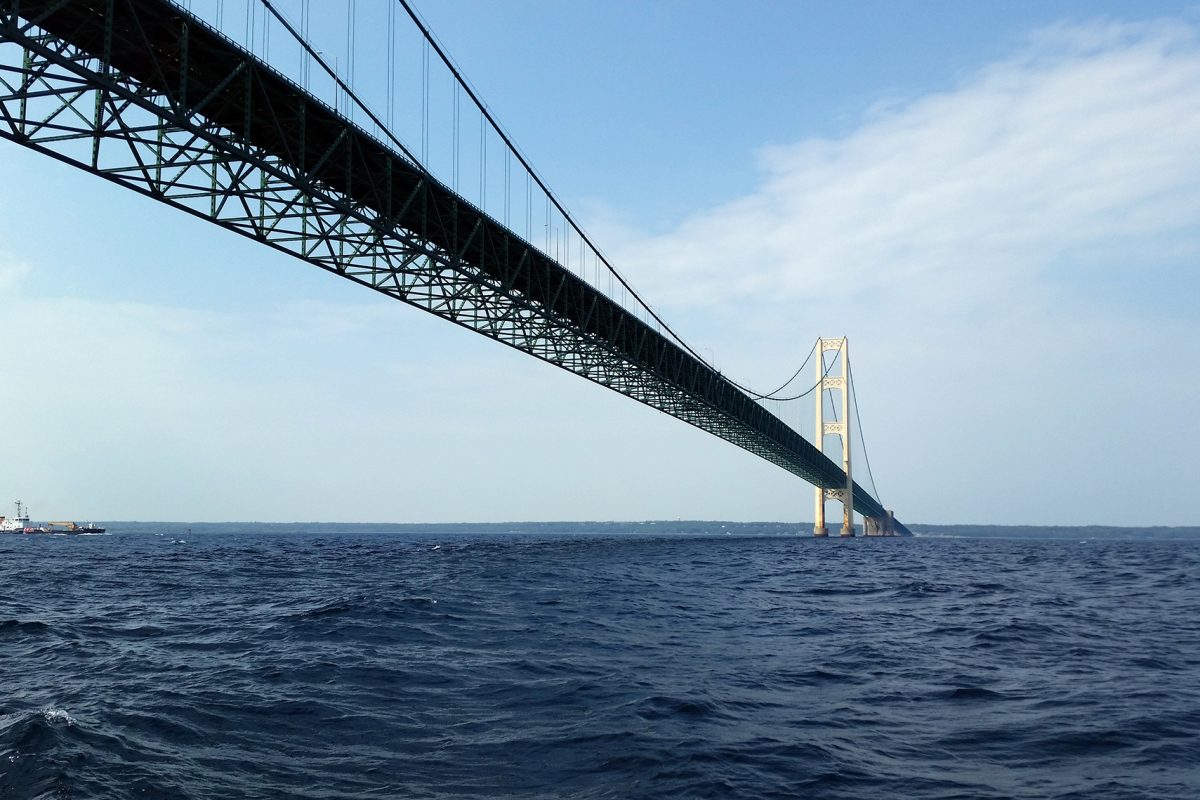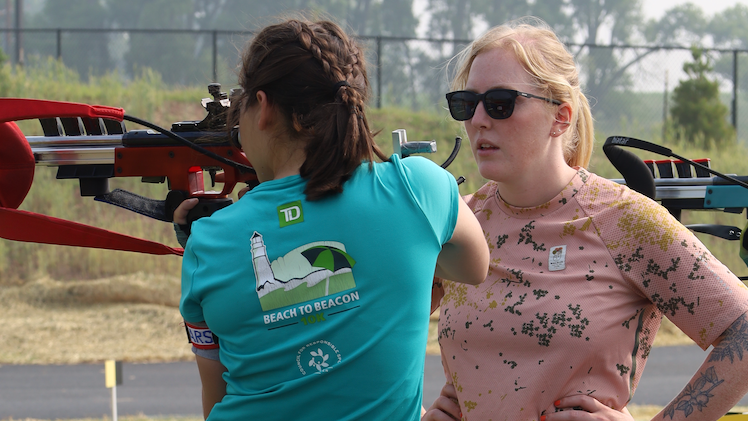
At the first handoff of the men’s World Cup biathlon relay in Hochfilzen, Austria on Sunday, it looked like Norway might not be able to turn in the performance that everyone expected of them.
Then Ole Einar Bjorndalen took over, and things went back to normal.
Alexander Os, Norway’s first-leg skier, can be forgiven for turning in a less-than-perfect performance. Conditions were stacked against him, with huge wind gusts that held the range’s indicator flags at perpendicular and heavy snowfall that made the targets appear 80 percent white at times.
“It continued to dump snow similar to the last the last few days, and the gusting wind once again made the shooting a challenge which many teams struggled with,” Canadian biathlete Brendan Green told FasterSkier.
The conditions made Bjorndalen’s performance – and Norway’s turnaround – all the more impressive. He cleaned both shooting stages with no extra rounds and had the fastest ski time on the first two of his three loops. After receiving the tag in 10th place with a 36-second deficit, he handed off to teammate Emil Hegle Svendsen in a completely different situation: the Norwegian was now even with Klemen Bauer of Slovenia and had a sizeable lead on the rest of the teams.
Svendsen, a double winner in Ostersund, Sweden, last week, continued the trend, and added thirty seconds to Norway’s lead. Tarjei Boe, who had already won both the sprint and pursuit this weekend, came into the stadium the final time, didn’t have to push himself to hold onto the win, and by the time he finished, the Austrians were almost a minute behind.
The Norwegians have truly dominated the World Cup so far this season. In Ostersund, Svendsen won the individual and the sprint, with Bjorndalen passing him near the end of the pursuit for a victory of his own. Here in Hochfilzen, Boe won both the sprint and pursuit races. In addition, Norway has picked up three second-place and three fourth-place results in the five non-team races.
Boe summed up his team’s dominance well in an interview with IBU News.
“That is pretty awesome,” he said. “Everyone in our team is smiling. It is good that the whole team feels like they are winning together.”
Austria’s second-place finish had its basis in solid skiing, but it was the home team’s shooting that put them ahead of the rest of the field. The Austrians were one of only three teams to avoid the penalty loop in the gusty conditions, and, incredibly, used only four spare rounds to do it. The next best-shooting team used seven.
France finished third, thanks to a last-minute sprint by Martin Fourcade, who passed Germany’s Michael Greis. Sweden was just two seconds behind in fifth.
The North American teams had a rough time both skiing and shooting, and ended up with less-than-satisfying results: the Canadians were 16th and the Americans 20th. There has been increasing pressure on the teams to turn in strong relay performances after American Tim Burke’s stint as the overall World Cup leader last year and Canadian Jean-Phillipe Leguellec’s inspired performances at the Vancouver Olympics. But on Sunday, neither team was able to be as competitive as they had hoped.
The Canadians seemed to be off to a promising start, with Brendan Green tagging off in eighth place, just thirty seconds behind the leader – and ahead of Norway, a somewhat surprising situation.
“I felt good on course, and was able to ski a strong leg,” he said in an e-mail. “My shooting was solid which I was happy about, and being able to tag off to my teammate in a pack not too far from the lead was exactly what I had hoped for.”
But it didn’t last. Nathan Smith, Canada’s next skier, used all six spare rounds and still hit the penalty loop three times, leaving the team in 18th place. And after Scott Perras left one standing target up, the team was sitting in 19th.
“Unfortunately our luck with the shooting didn’t hold up,” Green said. “But everyone skied strong, which shows that we have the ability to be in the running when our shooting is more together. As a team we are not happy with this result, but we are working the bugs out and are excited for our next relay opportunity.”
Leguellec was able to provide a strong finish, with the seventh-fastest anchor leg. He used four spare rounds to clean all the targets – not ideal, but a start.
“I didn’t really have a strategy per se today, I guess it was to simply do my race and stay out of the penalty loop,” Leguellec told FasterSkier. “I’ve been looking for that sweet sensation you get when you’re in your zone, and I guess I was able to find it a bit today in skiing. Shooting was good since I didn’t do any loops, but my standing was a struggle. In the end, I just wanted to keep it steady in skiing and make up spots on the range.”
He was more philosophical about the team’s final result, and pointed out that the Canadians have had plenty of mediocre relays before: Leguellec has been part of twenty-one relay teams as a senior, and only two have finished in the top ten.
“The race in its whole wasn’t the best we’ve had, but wasn’t the worst either. 16th is kind of an average considering we did two penalty loops. We’re going to play around with our start order until World Championships to see what works best for this fairly new and young team.”
The Americans had trouble right out of the gate, with Lowell Bailey visiting the penalty loop after his standing stage and tagging off to Burke in 17th. Burke had the seventh-fastest ski time for his leg, but his standing stage was a disaster. After using all three spare rounds, he still had to ski three penalty loops. As a result, his strong skiing was unable to gain the team a single place.
Leif Nordgren, the youngest and least experienced member of the U.S. team, was the only one who managed to avoid the penalty loop, but it took him five of a possible six spare rounds to do it, and his shooting time was one of the slowest of all the third-leg skiers. As a result, the U.S. actually fell one more spot, to eighteenth.
Nordgren was unable to find the positives in his performance.
“It was pretty much a total shit show today,” he told FasterSkier in an e-mail. “Being the only American to not hit the penalty loop makes me feel worse than it does good. The relay is a total team competition. Even though my race wasn’t as bad as everyone else’s, I still feel like I let down the team.”
To finish things off, Jeremy Teela gave the team one last visit to the penalty loop, and the U.S. slipped to twentieth place.
“I can’t really speak for the other guys, but I didn’t think the conditions were super tough,” Nordgren said. “It was just a day when everyone had almost the worst race possible.”
It was Nordgren’s first World Cup relay, and he hopes that the next one will be different.
“I was maybe a little nervous looking at the start list, looking at all the other guys who were skiing the third leg,” he said. “I was thinking, ‘well if Lowell and Tim have a good day, I will have to race these guys head to head.’ It didn’t come down to that today, but hopefully someday it will.”
Next week, the World Cup moves to Pokljuka, Slovenia, and the U.S. is relieved to be saying goodbye to Hochfilzen.
“Overall, I think we’re all ready to put this week behind us,” Nordgren said. “I’ve never raced in Pokljuka. But I’m excited to get the opportunity, and hopefully it will go better than this week.”




One comment
tibikeman
December 13, 2010 at 6:16 pm
Yep, that sucked. Thanks for the article- I was wondering what happened to our team. Here’s hoping we can pull it together next time!